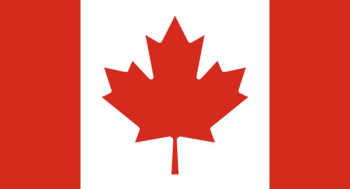Did you know that 97% of entrepreneurs who file their own trademark applications end up with rejected filings or unenforceable protections? We’ve seen it happen too many times.
Let me guess – you’re building something amazing and you know your brand needs protection, but the trademark registration process feels like navigating a legal maze blindfolded.
We get it. After helping hundreds of business owners secure trademark registration services in USA, We’ve identified exactly where the process breaks down for most people.
The good news? You don’t need a $5,000 retainer with a fancy law firm to get this right. What you do need is something that most “trademark guides” completely miss when they dump generic advice on your lap…
Understanding Trademark Registration in the USA
What Qualifies as a Trademark Under US Law
Trademarks in the US aren’t just logos and company names. They can be words, phrases, symbols, designs, or even sounds and smells that identify your products or services. But here’s the catch – they must be distinctive. The more unique your trademark, the stronger protection you’ll get.
The USPTO (that’s the United States Patent and Trademark Office) categorizes trademarks on a spectrum:
- Generic terms: Can’t be protected (like “Water” for bottled water)
- Descriptive marks: Need to acquire “secondary meaning” (like “Cold and Creamy” for ice cream)
- Suggestive marks: Hint at qualities without describing them directly (like “Coppertone” for suntan lotion)
- Arbitrary marks: Common words used in unrelated contexts (like “Apple” for computers)
- Fanciful marks: Made-up terms (like “Kodak” or “Exxon”)
The last three categories? They’re the strongest and easiest to register.
Benefits of Registering Your Trademark
Wondering if trademark registration is worth the hassle? Trust me, it absolutely is.
First off, you get nationwide protection, even if you’re only operating in a few states right now. Think of it as calling dibs on your brand across all 50 states.
Your registration serves as public notice that you own that mark. It’s like planting a flag that says “mine” to everyone else in your industry.
Need to sue someone for infringement? Federal registration gives you access to federal courts and the ability to recover damages, attorney fees, and even triple damages in cases of deliberate copying.
After five years, your mark can become “incontestable,” which basically locks in your rights and limits how others can challenge you.
And here’s a bonus many people miss: a registered trademark adds real value to your business. It’s an asset you can license, franchise, or sell.
State vs. Federal Trademark Registration
Many business owners get confused about whether to go state or federal with their trademark registration. Here’s the breakdown:
State Registration:
- Cheaper and faster (usually $50-$150)
- Protection limited to that specific state
- Less extensive search process
- No protection against federal registrants
- Good for purely local businesses
Federal Registration:
- Protection across all 50 states
- Right to use the ® symbol
- Listed in the USPTO database
- Can be used to obtain international protection
- Can be registered with US Customs to block counterfeit imports
- Stronger legal presumptions in court
The bottom line? If your business operates online or across state lines (and whose doesn’t these days?), federal registration makes way more sense.
Common Misconceptions About Trademark Protection
The trademark world is full of myths that can trip up even savvy business owners.
Think registering your business name with the state gives you trademark rights? Nope. That’s just permission to do business under that name in your state, not exclusive rights to the name itself.
Many folks believe the TM symbol (™) and registered symbol (®) are interchangeable. They’re not. You can use ™ anytime, but that ® is only legal after federal registration is complete.
Another common misunderstanding: “I registered my domain name, so I own the trademark.” Sorry, but domains and trademarks are completely different. Owning amazon.whatever doesn’t give you any rights to the Amazon trademark.
“Use it or lose it” isn’t just a saying—it’s trademark law. If you stop using your trademark for three consecutive years, it’s considered abandoned, regardless of registration.
And perhaps the biggest myth? That trademark protection is automatic and permanent. In reality, you must actively enforce your rights against infringers and renew your registration periodically, or you could lose your trademark forever.
The USPTO Trademark Registration Process
The USPTO Trademark Registration Process
A. Conducting a Comprehensive Trademark Search
Before diving into the registration process, you need to know if your trademark is actually available. Trust me, skipping this step is like building a house without checking if the land is for sale—recipe for disaster.
A thorough trademark search checks for existing marks that might conflict with yours. This includes identical marks, similar-sounding names, and even visually similar logos. The USPTO database (TESS) is your starting point, but don’t stop there. Search state registrations, common law usage, business names, and domain registrations too.
Many trademark applications get rejected because someone didn’t do their homework. DIY searches are possible, but they miss nuances that professionals catch. A trademark attorney can spot potential conflicts that might not be obvious to you—like marks in related industries or those with conceptual similarities.
B. Preparing and Filing Your Trademark Application
Got a green light from your search? Time to file. The USPTO offers two filing options:
- TEAS Standard: $350 per class of goods/services
- TEAS Plus: $250 per class of goods/services
The Plus option is cheaper but has stricter requirements. You’ll need to select your goods and services from the USPTO’s pre-approved list and meet additional criteria.
Your application needs:
- Your name and address
- A clear depiction of your mark
- A list of goods/services you’ll use the mark with
- Proof of use (or intent to use)
- Filing fee payment
The description of your goods and services is crucial—too narrow and you limit protection; too broad and you’ll face rejection.
C. Understanding USPTO Office Actions
Office Actions are the USPTO’s way of saying “we have questions.” About 80% of applications receive at least one, so don’t panic when you get yours.
These come in two flavors:
- Non-substantive: Minor fixes like formatting issues or clarifications
- Substantive: Serious problems like likelihood of confusion with existing marks or descriptiveness issues
You typically have six months to respond to an Office Action. Ignore it, and your application dies.
Common Office Action issues include:
- Likelihood of confusion with existing marks
- Merely descriptive marks (describing what your product does)
- Geographic descriptiveness
- Ornamental use
- Specimen issues
Your response must address every concern raised. This often requires legal arguments citing relevant case law and precedents—another area where professional help pays off.
D. Timeline and Costs for Standard Registration
The trademark registration journey isn’t a sprint—it’s a marathon. Here’s what to expect:
| Stage | Timeframe |
| Initial filing to first review | 3-4 months |
| Response to Office Actions | 1-6 months |
| Publication period | 30 days |
| Registration issuance | 2-3 months after publication |
From filing to registration, the process typically takes 8-14 months if everything goes smoothly.
Cost breakdown:
- USPTO filing fees: $250-$350 per class
- Attorney fees: $800-$2,000 for straightforward applications
- Search fees: $300-$1,000 depending on depth
- Response to Office Actions: $300-$3,000 depending on complexity
Budget for unexpected hurdles. The total investment typically ranges from $1,500 to $5,000 for a single mark in one class.
E. Monitoring Your Application Status
Once your application is in the system, you’ll need to keep tabs on it. The USPTO won’t call to remind you about deadlines or actions needed.
The Trademark Status and Document Retrieval (TSDR) system lets you check your application status anytime. Your application number is your golden ticket for tracking.
Set calendar reminders for:
- Potential Office Action response deadlines
- Publication dates
- Renewal deadlines (5-6 years after registration)
Many attorneys offer monitoring services that track your application and alert you to any status changes or required actions. This prevents costly missed deadlines that could torpedo your application.
After approval, your mark enters the Official Gazette for a 30-day opposition period. Anyone who believes they’d be damaged by your registration can file an opposition. If nobody objects, you’re in the home stretch to registration.
Need help with trademark registration in the USA?
At United Legal Experts, we simplify the entire process — from search to registration — so you can focus on growing your brand. Contact us today for a free consultation.






